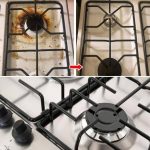ADVERTISEMENT
Too much movement may cause the filling to break.
Use cold or lukewarm water.
Avoid hot water as it can destroy the fibers of your pillows.
Do not use too much detergent and avoid fabric softener.
Reduce the amount of detergent you normally use; say 1/4 cap full if you use a full cap on a regular load (too much is harder to rinse). Don’t use fabric softener, which can build up on cushions and cause a shine that attracts more dirt and oil.
Rinse well.
If possible, choose a second or deep option to completely remove any rinse residue.
Now it’s time to dry.
Place pillows in the dryer on low heat. Add a few dryer balls or clean tennis balls to keep the filling from clumping. Down may take longer to dry, which is normal, Roberts says. To reduce static, a dryer sheet works well. And triple-check that pillows are completely dry (so there’s no mold!) before making the bed.
Clean pillows by hand if you cannot use a washing machine.
If you can’t find the tag on your pillow, you can always wash it the old-fashioned way. Wait for a sunny day and take the pillows outside and whack them with a clean broom handle (or a carpet paddle if you have one like your great-grandmother had!). Then, let them air out outside for a few hours. For foam cushions, you can take out your vacuum cleaner and use the upholstery brush attachment.
Use pillow protectors.
Cover pillows with pillow protectors before putting on pillowcases. Then, wash them every week when you wash your bedding.
Relax daily.
Fluff your pillows between washes if you make the bed every day. This helps keep them plump and redistributes the filling to restore its shape, Roberts says.
Have extra pillows ready.
If you find a pillow you love, buy a few more, Roberts recommends. If your favorite one no longer supports your head and neck the way it normally does, you can replace it with the same type this way. Plus, it’s always nice to have extra pillows on hand for overnight guests.
Know when to say goodbye to your pillow.
If your pillow is lumpy and flat, it’s probably time to part ways. The same goes if the pillowcase itself is stained and yellowed. Allergens like dust mites and pet hair can also build up in old pillows, so treat yourself to a new pillow every year or so (or as needed).
ADVERTISEMENT




